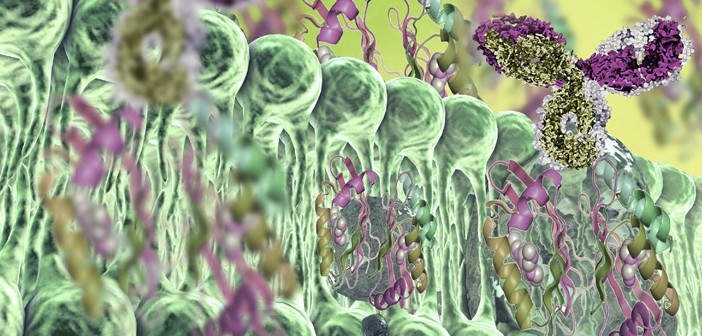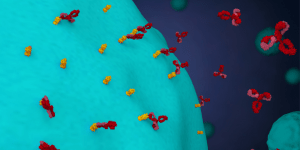Technology Digest: why is it important to develop a critical reagent management strategy?

More resources
Interview: critical reagents with Ashley Brant | Webinar: Critical Reagent Management Strategies | Download the eBook
The importance of critical reagents
When making pivotal decisions in support of drug development, data from ligand-binding assays (LBAs) can be difficult to manage. Ultimately, the robustness and reliability of the assay is directly influenced by the long-term availability and quality of the critical reagents used by the bioanalyst [1]. Critical reagents have been defined as the key components used in LBAs and include antibodies, biologics, peptides, as well as solid supports and matrices. These reagents have unique characteristics that are the backbone of assay performance in relation to sensitivity, specificity and robustness [2]. Critical ligand-binding reagents are predominantly produced via biological systems and are prone to lot-to-lot variability, which is importantly managed and monitored by life-cycle management [3]. The data generated by LBAs are dependent on the biological interactions of these analytes to the capture and detection reagents. Therefore, it is important to develop a critical reagent management strategy as even the smallest change in production could significantly alter the performance of the assay.
The maturation of drug-development programs to commercialization can span decades, so the production, quality, characterization, stability and sustainability of the critical reagents used are vital to the success of the bioanalytical laboratory [4]. Hence, why critical reagents are the crux of assay success. With this longevity and sustainability in mind, how can the continuing success of the LBAs be ensured? Replacing or extending the reagent based solely upon the assigned expiry date could miss changes in assay performance; and what happens when reagents change?
 Key challenges of critical reagents
Key challenges of critical reagents
A crucial challenge of life-cycle management is when reagents change. Changing any reagent can also change the method, which in most cases means bridging is required to ensure comparable results [5]. LBAs should be managed through continuous monitoring where each run is performed with the method being recorded and monitored for shifts in signal, background and overall performance. Through monitoring and interpreting characterization data over time, insights can be provided into reagent stability and overall condition. This helps to maintain ‘best practices’ of the critical reagent program [2].
At Eurofins Bioanalytical Services (MO, USA), they employ a ‘Test Method Summary Sheet’, where every run from the method, regardless of study or data usage, is recorded with the lots used of critical and non-critical reagents, and the signal for the standards and/or control samples are recorded. The ‘pass’ or ‘fail’ status is also recorded and control samples’ performance are assessed via use of Bland-Altman charts by tracking how they are performing either by signal, calculated concentration, or both.
Ashley Brant, Senior Director of Scientific Affairs at Eurofins, commented on how the ‘Test Method Summary Sheet’ recording system works: “At Eurofins we believe in monitoring assay performance across the board. Similar to how biomarker or serological assays are analyzed, we continually analzye the performance of the assay through time regardless of what study it is being run on. We monitor it by method and all the data goes into one huge spreadsheet so we can do statistics and monitor how the assay performs in real-time, in real-life. This way we can see how each of the critical reagents are impacting the assay. Even sometimes, the non-critical reagents, which we assume are non-critical, but these can end up being pivotal to the performance of the assay as well. We can analyze in real-time, make adjustments and ensure our assay is running as consistently as possible, the correct reagents are included as critical and therefore providing the most consistent data.”
LBA development is dependent on sufficient high-quality critical reagents, where the resupply inventory needs to be monitored and characterization of new critical reagent lots is essential [3]. Results from a recent LinkedIn survey, investigating the key challenges of critical reagent life-cycle management, highlight that reagent characterization was the greatest challenge with 53% of respondents in agreement. This challenge was followed by reagent design (18%) and reagent production and supply (18%). This demonstrates the inherent variability of critical reagents, which means that a well-characterized and defined management system is essential.
Documentation of critical reagents
When generating critical reagents it is important to consider the documentation. With the everchanging work environment and staff turnover, having SOPs − documented analytical procedures − improves reproducibility and consistency of the bioanalytical laboratory. Documenting the history of each critical reagent can become invaluable in troubleshooting investigations especially when a reagent must be re-created [3,4].
Details on handling and storage are also important as changes in these can affect the quality of the reagents and therefore the reproducibility of the data. The stability of reagents can be affected by freeze–thaw cycles, storage times and temperatures. Thus, it is important to implement a systematic monitoring process for the attributes of critical reagents, as this can accelerate assay troubleshooting, identify detrimental trends and minimize delays in drug development [2].
Critical reagent expiry/re-test dates
When critical reagents reach expiry or re-test dates, based on LBA data, a decision is made whether to extend and reassign an expiry/re-test date [5]. As long as LBA performance is monitored correctly and the LBA shows no decline, expiry/re-test dates for rare reagents are typically extended as they can be difficult to procure or generate [3]. At Eurofins Bioanalytical Services, they evaluate reagents and assign re-test dates by assay performance rather than relying solely on SOPs or manufacturer expiry, as there are examples when a reagent may appear stable based on the limited characterization performed by the manufacturer, but assay performance is not maintained.
Summary
Complete life-cycle management of critical reagents requires the bioanalytical laboratory to understand reagent characterization, supply chain sustainability, inventory management and database systems. Ineffective planning can interrupt the supply chain of critical reagents and cause delays to assay development and results, ultimately impacting cost and time. Therefore, efficient life-cycle management will ensure smooth operations in the bioanalytical laboratory [3]. Looking towards the future, as automated workflows accelerate drug-development timelines and the popularity of biologics increases, more emphasise will be put into critical reagent life-cycle management, rather than seeing it in a snapshot and switching the reagent out.
Download this Technology Digest now!
References
- Pihl S, van der Strate B, Golob M et al. EBF recommendation on practical management of critical reagents for antidrug antibody ligand-binding assays. Bioanalysis, 11(19), 1757−1798 (2019).
- Geist BJ, Clements Egan A, Yang T-Y, Dong Y, Shankar G. Characterization of critical reagents in ligand-binding assays: enabling robust bioanalytical methods and lifecycle management. Bioanalysis, 5(2), 227−244 (2013).
- O’Hara DM, Theobald V. Life cycle management of critical ligand-binding reagents. Bioanalysis, 5(21), 2679−2696 (2013).
- Briscoe C, Hughes N, Hayes R et al. 12th GCC Closed Forum: critical reagents; oligonucleotides; CoA; method transfer; HRMS; flow cytometry; regulatory findings; stability and immunogenicity. Bioanalysis, 11(12), 1129−1138 (2019).
- Piccoli S, Mehta D, Vitaliti A et al. 2019 White Paper on Recent Issues in Bioanalysis: FDA Immunogenicity Guidance, Gene Therapy, Critical Reagents, Biomarkers and Flow Cytometry Validation (Part 3 – Recommendations on 2019 FDA Immunogenicity Guidance, Gene Therapy Bioanalytical Challenges, Strategies for Critical Reagent Management, Biomarker Assay Validation, Flow Cytometry Validation & CLSI H62). Bioanalysis, 11(24), 2207−2244 (2019).
This feature has been brought to you in association with Eurofins Bioanalytical Services. The opinions expressed in this feature are those of the author and do not necessarily reflect the views of Bioanalysis Zone or Future Science Group.
In association with
